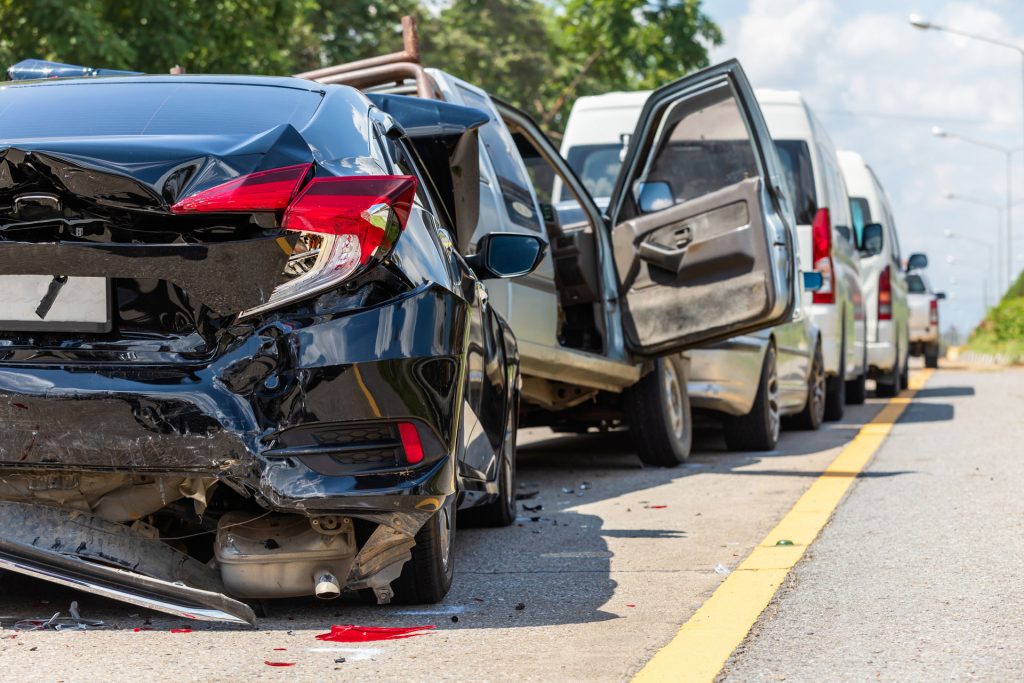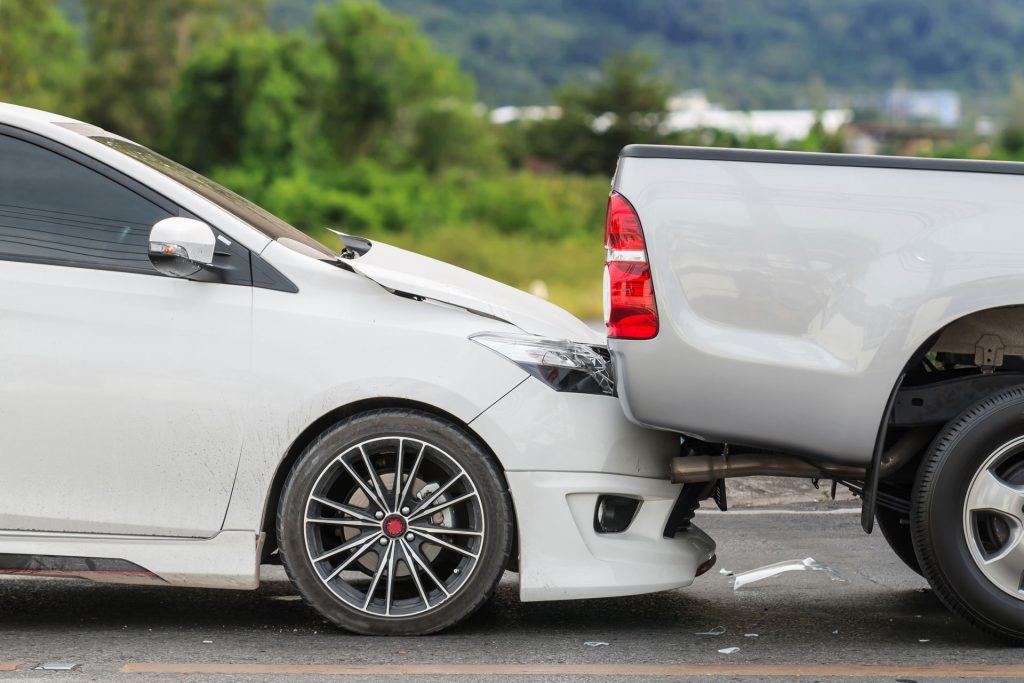How to avoid a rear-end collision
All road accidents can be destructive, but some tend to be worse than others. Rear-end collisions may not always seem serious, but they can be very dangerous. Sometimes, they can leave vehicle occupants with whiplash or other injuries, besides causing potentially serious damage to the vehicles involved in the crash. If possible, people should try their best to follow the steps for avoiding rear-end collisions.
No one can prevent all accidents, but drivers can use the right techniques can make it easier to drive safely without being hit from behind. Safety depends on a wide variety of factors, including other people’s actions, but each driver can try to identify actions that could potentially cause an accident.
Many aspects of driving can be dangerous; however, stopping on the road can be among the most hazardous. Stopping is often necessary, whether for red lights and stop signs or for traffic jams or other obstructions; however, this action often increases the danger of being hit from behind. To help prevent this kind of accident, drivers should try to move in a way that helps reduce the risks.
Potential Injuries
As Ian Law notes in his Wheels.ca article on preventing rear-end collisions, these types of accidents can leave road users with serious injuries. For example, the impact of a collision from behind can leave drivers and passengers with whiplash, possibly affecting the victims for life. Any kind of injury involving the head and neck is potentially very dangerous, and whiplash can be especially problematic as it leaves no outward signs for people to see.
The Mayo Clinic website describes whiplash as a neck injury resulting from a quick and forceful back-and-forth motion of the head, such as happens in rear-end vehicle accidents. Sometimes, the spinal cord can also be affected. Although many people can recover from whiplash in just a few weeks, others suffer chronic pain and other complications after an injury like whiplash. An injury like this could affect the people’s ability to work, to lift heavy objects, or even to sit and read in comfort.
Accidents can happen in a variety of contexts, but some are more common than others. According to the Ontario Safety Association for Community & Healthcare, most rear-end collisions occur in one of a few basic settings. These include the approach to unexpected traffic situations or construction zones, or where a road narrows. In urban areas, rear-end collisions tend to happen in locations with high volumes of traffic, such as at major intersections. They can also happen in school zones and parking lots, where the high number of pedestrians means that drivers must often stop abruptly.
In areas and situations where rear-end collisions are common, drivers should watch carefully for the common signs of a potential accidents and try to prevent them if possible. Being alert to the possibilities of a serious accident can help drivers to assess the relative dangers of various maneuvres and avoid risky situations if possible.
Rear-end collisions can happen for various reasons, but four basic causes are the most common. If drivers watch for these factors, they can help to reduce the risks and avoid the trouble and expense of dealing with an accident and its aftermath. Even a minor rear-end collision can cause damage. Paying attention to the factors involved in these accidents is important.
Reasons for Rear-End Collisions
The first factor is driver inattention. Drivers sometimes fail to pay enough attention to the road because they are busy thinking about other matters to such an extent that they neglect to watch their surroundings. Sometimes, the surroundings themselves are the problem, whether that includes children fighting in the vehicle or something at the side of the road that takes drivers’ attention away from what they are supposed to be doing.
The aspect of driver attention can be especially problematic in cases where the environment changes frequently, such as in weather with intermittent snow or rain. If the driver must constantly assess the weather and frequently turn the windshield wipers on or off, it can become a major distraction. Similarly, moving through neighbourhoods with frequent school zones or obstructions on the road can be distracting, and drivers may fail to notice that a vehicle ahead on the road is slowing down or stopping.
Rear-end collisions can also happen when a driver is unable to assess the proper braking distance for an upcoming stop. Inexperienced drivers are especially prone to this kind of accident, as they have not yet learned to judge the distances necessary for stopping safely. Road conditions are also important in this regard, as stopping on icy or wet pavement can take significantly longer than stopping on dry road. Often, drivers must experience driving conditions over a full year before they really know how much space they need for stopping.

Even for experienced drivers, stopping distances can be difficult to judge. Besides road conditions that can increase the distance necessary for stopping, driving an unfamiliar vehicle can hinder a driver’s ability to judge stopping distances. Fog, bright lights or other factors may also influence the drivers’ knowledge of how much space they need to stop under the conditions they encounter.
A fourth reason why rear-end collisions occur is the dangerous practice of tailgating. This term refers to a situation in which one vehicle follows another very closely, to the extent that it may be difficult or impossible to stop in time if the front vehicle brakes abruptly.
Sometimes, tailgating occurs because the second driver has failed to notice the first vehicle slowing down and has not yet taken action to increase the gap between the vehicles. Often, however, tailgating is a form of aggressive driving by which the driver of the second vehicle hopes to force the driver of the first one to speed up. If the first driver must stop for any reason, however, it can easily result in a rear-end collision.
Types of Rear-End Collisions
Many rear-end collisions are relatively minor, resulting in what people refer to as “fender-benders.” The Canadian Oxford Dictionary defines these accidents as simply “a usually minor collision between two vehicles.” It might result in little more than scraped paint or a slight dent in the vehicle, but the experience can still be unpleasant and disconcerting.
Any kind of accident can potentially be dangerous, but drivers can take steps to try to eliminate the problem. Ian Law’s Wheels.ca article gives several guidelines for preventing rear-end collisions. The first is to look as far up the road as possible to spot potential hazards. If drivers know that a traffic light has been green for a long time, for example, they should be prepared for it to change. That way, they will not have to stop abruptly when the time comes. Looking far ahead will also help drivers anticipate construction zones and other obstructions.
A second technique is for drivers to check their mirrors often, especially with traffic coming up behind them. Checking the mirrors every five to eight seconds, or more often if necessary, will help drivers decide what actions to take as they come to a stop. In some cases, drivers will have to make difficult decisions to avoid a rear-end collision. For example, if another vehicle is following close behind on the approach to an amber light at an intersection, the driver of the vehicle in front might need to make a difficult decision about whether to risk a rear-end collision or to go through a red light.

A third tactic for avoiding rear-end collisions is to allow enough space between vehicles. When following behind another vehicle, drivers should leave at least a two- or three-second gap between the back of one vehicle and the front of the next one, or more in slippery conditions or at high speeds. That way, the second driver will likely have enough space to avoid crashing if the vehicle in front stops suddenly. Even when stopping behind another vehicle, it can be helpful to leave extra space or to look for a possible escape route in case a vehicle coming from behind cannot stop.
Part of allowing enough space is to avoid rushing to a stop sign or red light. Sometimes, it is difficult to avoid a sudden stop, but gradual stops are always best. That way, any driver following behind will have time to see the first vehicle’s brake lights and to respond in time to avoid a collision. That, in turn, will allow other drivers to avoid a multi-vehicle pileup that could cause many injuries or deaths, besides seriously damaging the vehicles.
Defensive driving is a key to avoiding rear-end collisions. All drivers should be aware of other road users and how their actions might affect nearby vehicles. Evasive action may sometimes be necessary to avoid rear-end collisions, and drivers should be ready to act as necessary to prevent a potentially serious accident.
Rear-end collisions can happen easily if drivers fail to pay attention to what others on the road are doing, but they are preventable in many cases. If drivers follow a few simple steps for defensive driving and take the right precautions, they can prevent many of these potentially destructive accidents.
